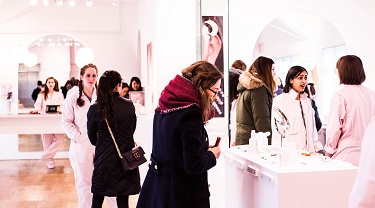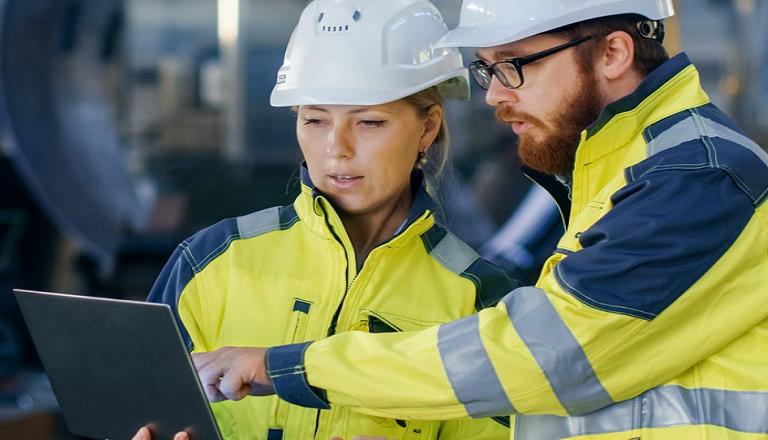Years ago, when I first started my business, I identified trade shows as a central part of my marketing strategy. Mydoma Studio is project management and client collaboration software for interior designers, A SaaS business (software-as-a-service), and my research revealed a few big shows I could hit up to reach the most customers. Obviously, we needed to go where the designers go, so off we went to the biggest U.S. design trade shows in Las Vegas and North Carolina.
There was just one problem: After a few shows, I realized I was spending a lot of time and money on preparing and purchasing a booth, only to demonstrate my software service on a video loop. Any good storyteller or marketing professional knows this is boring with a capital B. And amidst the lure of home decor products, free samples and live demos, I wasn’t getting any traffic, never mind any leads. There was almost zero return on my trade show investment.
Trade shows give you a glimpse of your competitors
One of the best things about going to trade shows, however, is you can see what your competitors are up to. It’s also a quick way to understand what works and what doesn’t when it comes to product promotion. A walk around one of the big ones in Vegas highlighted many companies like mine, trying to show off their fabulous, innovative software on a boring video loop.
But there was no one watching. Like me, lonely product owners were standing in their booths looking bored.
I asked myself a simple question: where are all the people? I soon figured out that if they weren’t sampling material products, they were attending a workshop, panel discussion or keynote presentation.
It’s much SaaSier to educate
Instead of spending $10,000 to $12,000 for a booth, I hit on the idea of sponsoring events and hosting educational events at trade shows.
Not only does it get the Mydoma Studio name out there, it positions us as knowledge leaders in the design field. We know our software helps interior designers develop a passive income stream, for example. Educating them on how to develop that revenue stream has proven far more effective at getting customers than attempting to proclaim the greatness of our software service from an empty booth.
How to get started as a trade show event sponsor
We’ve been using this strategy consistently for about two years. My focus is on two to three big trade shows annually in the U.S. Be forewarned: there’s a lot of legwork upfront, which is why you want to pick and choose shows that are the best hit for your service.
Networking is key. You need to reach out to the right people and be proactive about your desire to become an event sponsor.
Be prepared to co-organize the event you’re sponsoring. If Mydoma Studio is hosting an educational seminar—even if we’re not showcasing our product explicitly—we spend weeks in advance preparing the landing page, organizing the email list and sending invitations. We co-ordinate all of the marketing around the event. It’s a lot of work. But the good thing is we can often predict precisely how many leads we’ll get post-event. As a co-sponsor, we get access to a big email list of prospects, and connect with clients of our partners, who already have a proven success record.
Don’t expect to “hard sell” your SaaS at every trade show
Keep in mind that, unlike a traditional booth model, you may not put your service front and centre when you sponsor an event. Often, it can be a distraction.
I do a lot of presentations and, although I’ll try to slip in a mention of our software service as an example, I’m not doing a hard sell in most cases.
Think of trade shows and events as a way to get your name out there and build awareness of your brand. It’s just one point in the marketing funnel. What you do before and after the event will have the biggest impact on getting new customers.
How to maximize customer leads from your trade show presentation
- Get the word out in advance. We always do an invitation that requires an RSVP. This is a way to gather emails. You need to get as many emails as possible to support your inbound marketing program.
- Work with the trade show hosts. In Vegas, hardly anyone RSVPs, but the attendance rate is high. A lot of people walk by, see people gathering and join the crowd. Every attendee has a badge they must scan to get into the event. We co-ordinate with the trade show organizers in advance, so we can collect that information and add it to our database. In exchange, we give them our RSVP data.
- Thank your customers. The thank-you email can be simple, but it’s essential. We offer a recap of the content we talked about at the event, a soft sell for our partner at the event, and we always have a blurb about Mydoma Studio.
- Stay top-of-mind with a blog. We always write a blog post to summarize the event, which we’ll send out after the thank-you email. This is an opportunity to pitch additional topics of expertise, highlight testimonials from the trade show—a quote or two from people who attended—and usually a reminder of an upcoming event.







